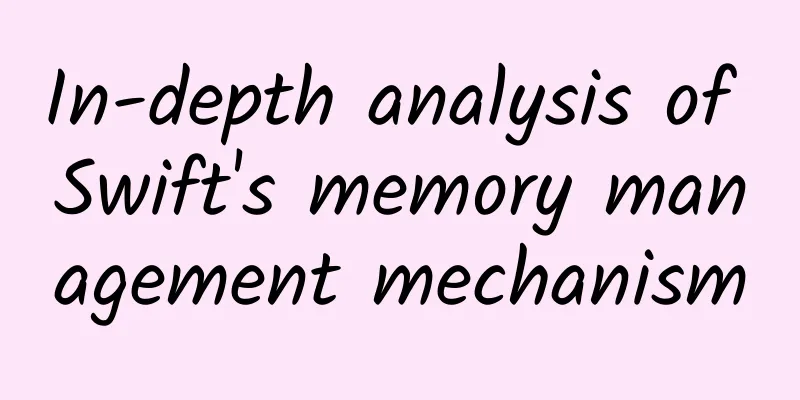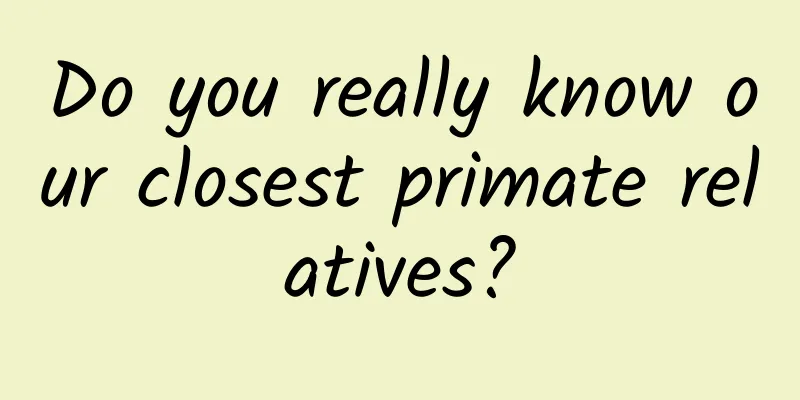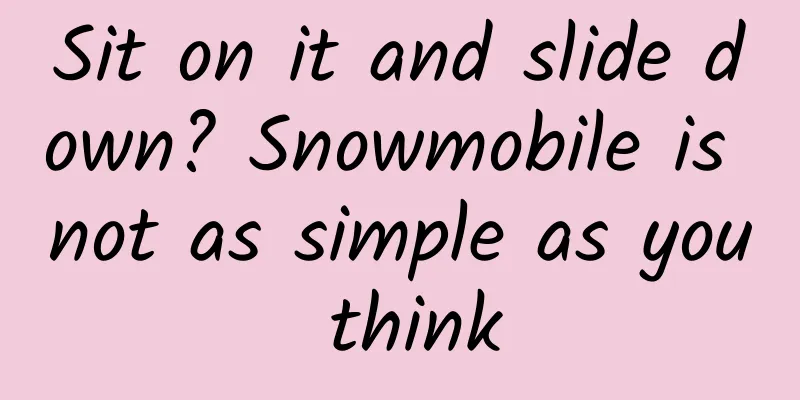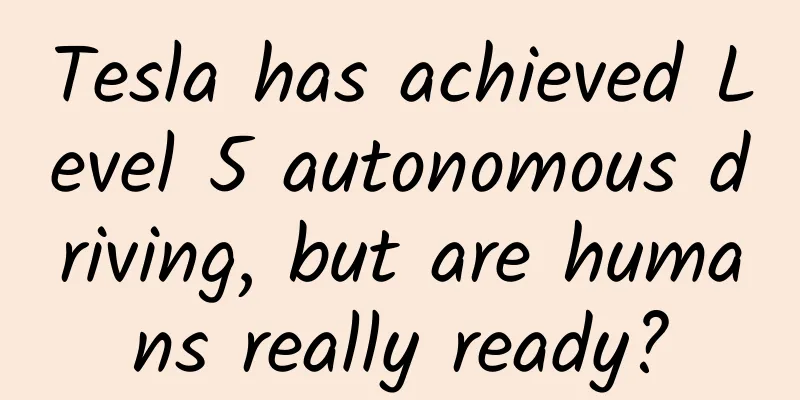Compared to reading, is “listening to books” just passively receiving information?
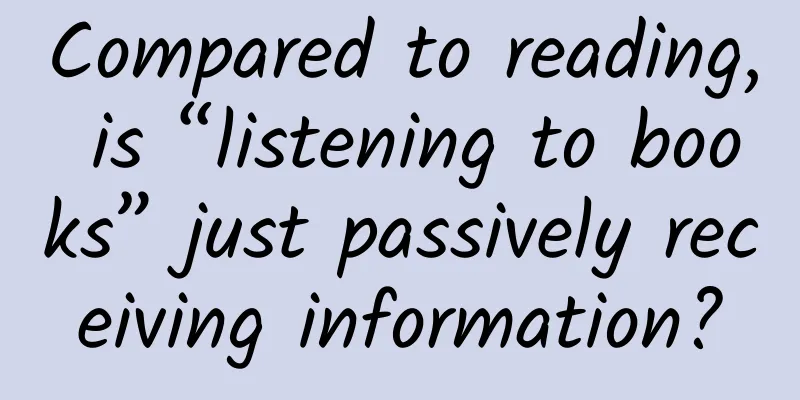
|
Tuchong Creative How long has it been since you finished reading a book? Without a whole period of time, the surrounding environment makes people unable to calm down, and the 996 work has already overwhelmed the eyes... Fortunately, the various audiobook apps on smartphones seem to be born for this purpose. Listening to books can not only free tired eyes, but also has no restrictions on time and place. It is very suitable for the current fragmented reading environment and fast-paced life. However, compared with traditional reading, which requires more active and dedicated thinking, it is always difficult to concentrate on understanding the content of books in the form of listening, and the impression left is not as deep as "reading" books. Therefore, some people say that reading books is active learning and listening to books is passive reception of information. Does it mean that in the matter of reading, the ancient saying "seeing is better than hearing, and seeing is better than hearing" is also applicable? 01 Listening to books is not passive. In fact, the brain treats both text and language equally. To understand the meaning of this sentence, we must first know how the brain processes information. Tuchong Creative Text is received by the human eye in the form of light waves, then transmitted to the brain as nerve signals, and finally reaches the area of the cerebral cortex responsible for processing text for analysis and understanding. The process of sound signals being collected by the ears and encoded by the brain is similar to the process of visual signal processing. The brain needs to store, identify, remember and understand this information. ① Storage: short-term storage of visual and audio images The human sensory organ is like a 24-hour surveillance camera, faithfully recording all the images it sees and hears. However, our brain does not want to take in all the complicated and redundant information, so it decides to store it briefly to facilitate the subsequent screening of useful information. Tuchong Creative This short-term storage process was named visual storage and audio-visual storage by Neisser, the father of cognitive psychology. Taking audio-visual storage as an example, try to recall the complex process of understanding daily conversations. The role of audio-visual storage becomes clear - it allows us to have more time to listen to the information contained in the sound, so we can often "hear" them after the sound disappears. ② Identification - Filtering After a short period of storage, the brain begins to filter the information seen by the eyes and heard by the ears, eliminating some things it thinks are unimportant and focusing on information that is useful to itself. At this time, since a lot of visual information that adults are exposed to on a daily basis is described in words, the brain thinks that words are extremely important to you, so it prioritizes retrieving this part of the content and immediately hands it over to the area responsible for processing words for analysis and understanding. Tuchong Creative The same is true for sound. The brain will automatically filter out some unimportant insect chirping, bird calls, and mechanical noises and focus on the information of verbal conversations. Under the influence of the language environment of human society, the neurons of the human auditory system can only respond to certain specific features of sound stimuli. ③ Memory – Ecstatic Image Children's need and dependence on text and language in daily life is far less than that of adults. Their brains continue to maintain extremely clear and vivid images after the stimulus signals are transmitted, and record what they hear and see truthfully. This phenomenon is called eidetic imagery. Interestingly, many people think that only visual information will be imprinted in children's minds like photographs, but in fact, in addition to visual eidetic images, there are also auditory eidetic images, olfactory eidetic images, tactile eidetic images, etc., but this form of memory rarely continues into adulthood. Tuchong Creative ④ Understanding: Symbolization of sound When reading, the left and right hemispheres of the brain have different divisions of labor: the left brain understands first and then remembers, remembers slowly and forgets quickly, and is more suitable for memory digestion and absorption; while the right brain turns language into images, which can be memorized in large quantities and quickly, and the memory quality is very high, and once remembered, it is difficult to forget. When the right brain analyzes a word, such as reading the word "cat", it automatically searches for the image of a cat in the right brain's image library, and then links the word cat with its picture. When analyzing a sentence, such as "the cat is sleeping", the image library will show an image of a cat curled up in the sun, sleeping in a daze, perhaps with a slight snoring sound. But listening to books involves one more step than reading - the symbolization of sound. Tuchong Creative We often forget that Chinese characters are both phonetic and ideographic. When we hear an unfamiliar word, our first reaction is to think about what characters it is made up of, and then extract the relevant images from the right brain. If we need to remember the word, the brain tries to remember the characters, not the sound itself. Therefore, listening to books actually requires more from the brain and is more conducive to cultivating the habit of concentration. In summary, we can see that both are encoded in the form of electrical signals and require deep processing. The brain does not distinguish between text and language, which is active and which is passive. Rather than "seeing is believing", the brain is more convinced that "hearing is seeing". 02 Why listening to books is not as profound as reading them As mentioned above, the symbolization of sounds in the Chinese language environment requires an extra step in the brain's processing when listening to books, compared to simply reading books. Therefore, we often feel that it is easier to lose focus and harder to concentrate when listening to books than when reading. In fact, in addition to this, there are also factors such as the constraints of speech perception, emotional perception, and repeated processing, which will make the efficiency of information reception when listening to books not as high as when reading books. Tuchong Creative ① Constraints on speech perception There are some objective factors that restrict listening to books. For example, at 20-30 decibels, the intelligibility of speech is 50%; when it increases to 50-60 decibels, the intelligibility reaches 90-95%, but at 140 decibels, people will feel headache. In addition, noise such as the roar of subways and airplanes will interfere more with speech perception. In order for speech to communicate smoothly, the general voice signal must exceed the noise by more than 6 decibels. ② Emotional perception The sound sources of listening to books can be divided into real-person reading and speech synthesis. When listening to an audiobook read by a real person, it is easy to be moved by the tone of the reader, and you can hear the ups and downs of emotions more accurately from the audio, but you will also lose some of your self-perception ability. When we read a book, we are completely in control of it. We can freely control the plot, rhythm, and demarcation points, and have a lot of room for imagination and aftertaste. Tuchong Creative When listening to synthesized speech, there is currently no technical way to flexibly control word segmentation, rhythm prediction, emotion prediction, etc. During the listening process, it is necessary to overcome the interference of these factors on the coherence of understanding. ③ Backtracking I don't know if you have noticed that when we read a book, 10-15% of our eye movements are retrospective, that is, our eyes often go back and look again. But because this process is so fast, we sometimes don't even notice it, but it is obvious that this can greatly improve our understanding of the book (of course, this will also reduce our reading speed). On the contrary, when we listen to books, in theory we can go back and listen again, but in reality, driven by laziness, few people are really willing to do so. Compared with reading, the lack of backtracking will more or less lose some of the understanding of the content. Tuchong Creative 03 Can listening to books replace reading? Since the 1990s, with the deepening development of the cultural market, the commercialization trend of knowledge has become increasingly obvious. With the advent of the "picture-reading era", visual culture has become increasingly prominent and gradually become the dominant culture. The language text culture based on paper media has transformed into a visual image culture based on electronic and digital media. Although humans have been transmitting information through language for most of the millions of years of evolution, and some ethnic groups still use word of mouth to record the stories of their ancestors, the era we live in is increasingly unaccepting of the ancient method of transmitting civilization simply through sound. Over time, our attention is distracted by the bizarre visual impact, and our brains are becoming increasingly tired. Tuchong Creative Although the brain does not differentiate between what it sees and what it hears, in terms of learning efficiency, perhaps "seeing once is worse than hearing a hundred times". Although listening to books cannot replace reading, it can help us discover new perspectives and experience a new world, so why not? Listening to books cannot replace reading, but then again, there is no need for listening to books to replace reading. In the final analysis, reading and listening to books are just ways of receiving information, and they are equally good, with each having its own advantages and disadvantages; whether reading or listening to books, they are just means, not ends. References: [1] Solso, RL, Maclin, MK & Maclin, OH (2008). Cognitive Psychology: 7th Edition. Shanghai People's Publishing House, 70-73. [2]Richard,JG&Philip,GZ(2008).Psychology and Life,19th Edition,Pearson Education,86-126. [3] Chang Baoru. (1990). Chinese Language Psychology. Xinhua Bookstore, 36-96. 4. Li Yanfang, Mei Leilei & Dong Qi. (2008). A study on the characteristics and development of audiovisual dual-channel speech perception of Chinese native speakers. Psychological Development and Education (03), 43-47. doi:CNKI:SUN:XLFZ.0.2008-03-008. 1. Lu Yaming & Ma Jingjing. (2012). Visually-dominated culture. Film Literature (09), 25-26. doi:CNKI:SUN:DYLX.0.2012-09-014. Author | Tang Yicheng, Chi Wenzhong Science Popularization and Mental Health Promotion Center Review | Chen Zhiyan Associate Researcher, Institute of Psychology, Chinese Academy of Sciences This article is produced by the "Science Rumor Refutation Platform" (ID: Science_Facts). Please indicate the source when reprinting. The pictures in this article are from the copyright gallery and are not authorized for reproduction. |
<<: Today is the Autumnal Equinox丨Blue sky, yellow leaves, autumn colors
>>: Many international firsts! China's Sky Eye has made another achievement!
Recommend
A 44-year-old famous actress revealed that she has been using reading glasses! A 39-year-old civil aviation captain has set the font on his phone to be super large! Can presbyopia be cured?
Recently, 44-year-old actress Joe Chen posted on ...
How can fission posters quickly acquire accurate users?
In fact, many people rarely think about these two...
How to do Internet brand marketing? 6 rules!
The Internet is a place where innovation is highl...
Second category e-commerce advertising!
Second-class e-commerce advertising : Tencent adv...
Huawei Mate 20 Pro removed from Android Q list, no hope for update?
On May 23, according to Phone Arena, Google quiet...
Google recruitment information leaked: Android Studio can be used to develop Android systems
Google recently released a new job posting on its...
The "crawling exercise" has become popular. Is it really useful? What are the taboos?
Recently, "crawling exercise" has sudde...
Tips to increase your Facebook page to tens of thousands of fans!
As the largest overseas social platform, Facebook...
Summary of low-cost promotion methods for new APP in the early stage
Hello, everyone. Since many of you are interested...
More alcohol, less brain?
Do you like to have a couple of drinks when you h...
Three ways to get traffic
Look at the picture I posted below. This is a pic...
A 63-year-old aunt suddenly started dancing and couldn't stop. It turned out to be caused by this common disease...
Expert in this article: Yang Chao, MD, attending ...
How does a wedding photo studio promote itself on Weibo? How effective is Fantong?
The development of the Internet has brought a con...
Drinking 3 cups of hot water from a disposable paper cup may damage your immunity?
In daily life Plastics are everywhere From takeaw...
How does Xiaohongshu carry out refined growth operations?
In an environment where it is increasingly diffic...




